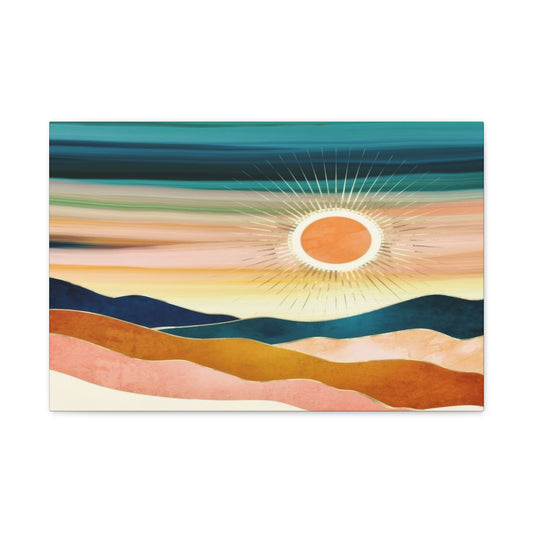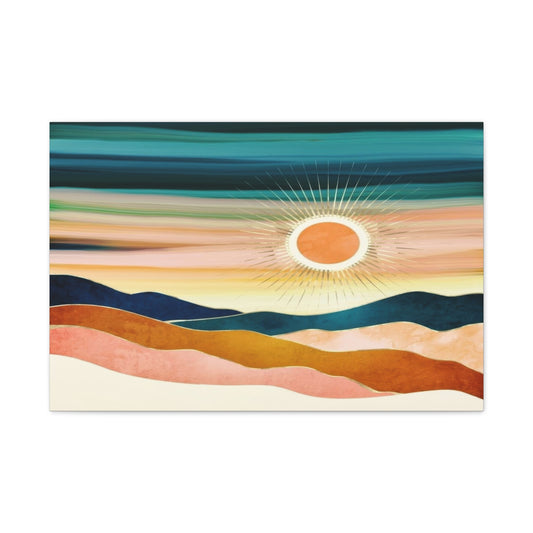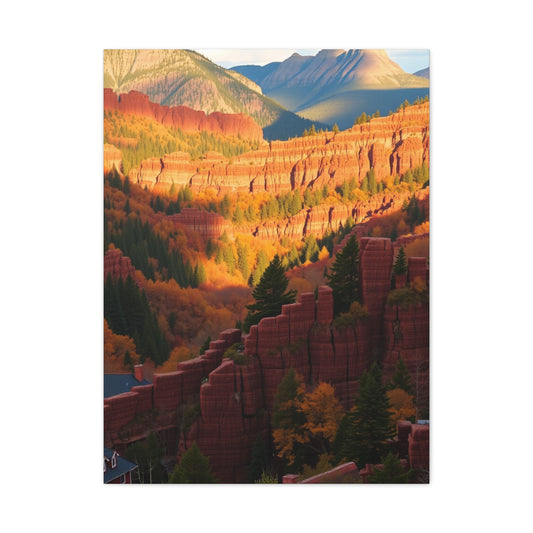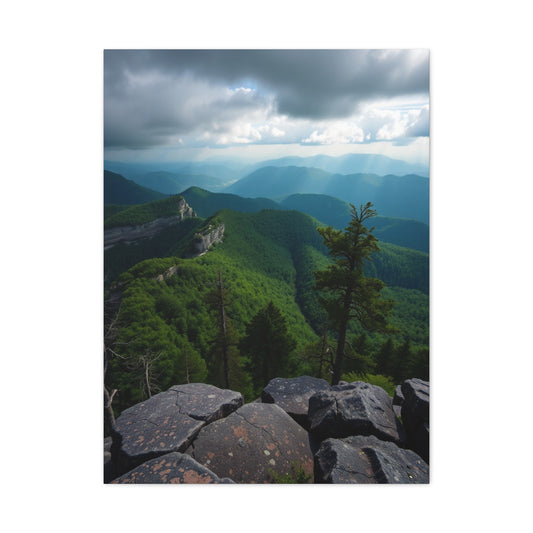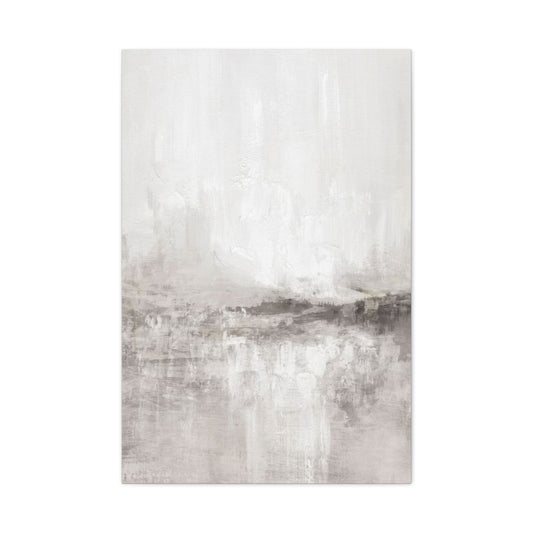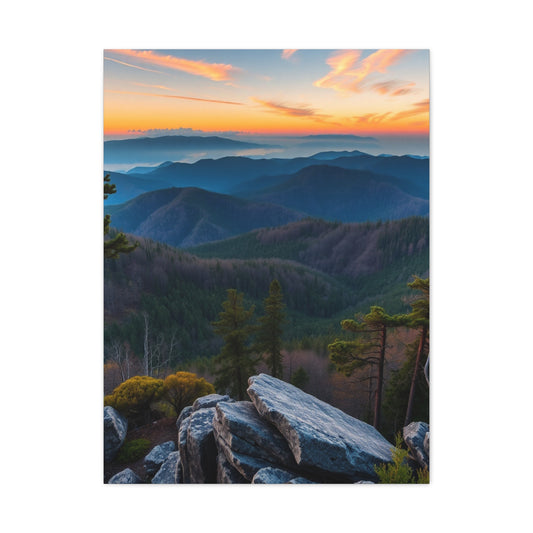When it comes to decorating your home, one of the most impactful decisions you'll make is selecting the right size of wall art. Whether you choose a single-panel framed print or a bold multi-panel gallery wall, the size of your artwork is a critical element in achieving a balanced and visually pleasing space. Art that is too large can overpower the room, making it feel crowded and chaotic, while art that is too small can leave the space feeling incomplete or disproportionate.
This guide will provide you with essential tips on how to choose the right size of wall art for your home, taking into account factors such as room layout, furniture size, and wall dimensions. By using this guide, you’ll ensure your artwork complements your décor, helping you create a cohesive, inviting space.
Why Large Wall Art Makes a Statement
Large wall art is an exceptional way to transform your living space and make a bold, impactful statement. It is one of the most effective ways to elevate a room's aesthetic without having to invest in costly renovations or extensive changes to your interior design. Whether you're working with a modern, contemporary layout or a more classic, traditional room, oversized artwork has the ability to help define the character and ambiance of the space.
A single piece of large wall art can completely shift the tone of a room, drawing attention and serving as the room's focal point. It can effortlessly tie together different elements of your décor, bringing cohesion to the space. This makes it not only an attractive feature but also a functional piece of design that enhances the overall style of the room. One of the best things about large wall art is its versatility, as it can fit seamlessly into any type of space, whether you're decorating a chic, modern apartment or a more cozy, traditional home.
Creating a Unified Look with Large Art
One of the primary benefits of using large wall art in a room is its ability to unify disparate elements of the space. Rooms are often made up of various colors, textures, and styles, and it can sometimes feel like these elements are disjointed or mismatched. A large canvas print can serve as a visual anchor that pulls everything together, creating harmony in the room. When you select a large piece of artwork that incorporates the colors found throughout your space, the piece works as a natural bridge between them. This can bring cohesion to a room that might otherwise feel like a collection of unconnected design ideas.
For example, if your space features various shades of blue, gold, and cream, a large piece of wall art that includes these colors can tie those elements together. The colors in the art can flow from one another, helping them work together cohesively. In this way, large art acts as a unifying thread that helps the space feel put together, without overpowering it or making it feel cluttered.
Moreover, large wall art is an excellent tool for setting the overall tone of a room. If you want a modern, sleek, and contemporary vibe, a large modern print can introduce that atmosphere. Abstract art or geometric designs work particularly well in contemporary spaces, adding visual interest and a cutting-edge feel. On the other hand, if you're after a more traditional, classic vibe, oversized pieces of vintage or classical art can provide a sense of elegance and timelessness.
The tone set by the art influences the entire room, determining how you interact with the space. For instance, if you opt for a piece that uses calming neutral tones, the room may feel serene and peaceful, creating a perfect environment for rest and relaxation. In contrast, if the artwork is vibrant and bold, it can bring energy and life to the room, making it ideal for spaces meant for socializing and entertaining.
|
Related Catagories: |
Large Art as a Focal Point
When strategically placed, large wall art becomes the focal point of the room. It draws the eye and provides a natural point of interest that enhances the entire space. In a living room, for instance, a large piece of wall art above the couch can anchor the room, balancing out the other elements and ensuring the space doesn’t feel lopsided or underwhelming. Large wall art can also work wonderfully in dining rooms, bedrooms, and hallways, where the art serves as the centerpiece, helping to define the area.
In addition to acting as a visual anchor, large artwork can also create a sense of scale in a room. If your space has high ceilings or is particularly large, a bold piece of art can fill that vertical space, making the room feel more proportionate. The size of the artwork allows it to fill the empty space in a way that feels intentional and designed, rather than looking like an afterthought. Conversely, if your room is smaller, a large piece can create the illusion of more space by drawing the eye upward, making the room feel taller and more expansive.
Cost-Effective Design Enhancement
Another significant benefit of large wall art is its affordability compared to other home décor upgrades. While major renovations, new furniture, or extensive re-decorating projects can be expensive, large wall art provides an affordable way to completely revamp the look of a room. Instead of committing to an entire room overhaul, a striking piece of wall art can provide a new aesthetic without breaking the bank.
For renters who are looking to refresh their space without sacrificing their security deposit, large wall art is an ideal solution. It's a non-permanent change that adds a significant visual impact to the space without altering the structure or design of the room. Whether you are in an apartment or a rental house, hanging a bold piece of art on your wall is an effective and temporary way to make a statement while still respecting the limitations of your lease agreement.
In fact, the impact of large wall art can be similar to investing in more expensive home décor items, like statement furniture or designer accessories. Just as a new sofa or coffee table can serve as the centerpiece of a room, so can a piece of oversized artwork. It brings immediate attention and transforms the space, making it feel brand new without requiring a significant financial commitment.
Large Wall Art for a Timeless, Bold Impact
Large wall art is an essential element in high-end home design. Few design choices make a bolder statement than oversized art, and it's an easy way to elevate the entire look of a room. Whether you're decorating a spacious living room or a cozy bedroom, large canvas prints or multi-panel pieces can bring a touch of luxury and sophistication to the space. In fact, the grandness of the artwork often carries a feeling of elegance that instantly transforms the atmosphere of the room.
Oversized artwork can set the tone for the entire interior design of the room. A striking piece not only serves as the focal point but also helps to influence the design choices around it. For example, if you choose a large piece of art with rich, deep hues, it can inspire other décor choices, such as the selection of throw pillows, rugs, and curtains that complement or accentuate those colors. Large wall art works as a tool that ties together your furniture, color palette, and overall décor vision.
Even if you're on a budget, it's important to remember that wall art doesn’t have to be expensive to make a statement. With the right piece, you can achieve the same dramatic effect as high-end furniture and design elements, all while staying within your price range.
Selecting the Right Type of Large Art for Your Space
When choosing a large piece of wall art, it’s important to consider the style and vibe of your room. Large modern prints work well in contemporary spaces, while classic art can add a timeless touch to more traditional interiors. Think about the materials and mediums that will enhance the space—whether it’s a painting, a framed print, or even a photograph. Art with metallic details or abstract shapes can help elevate a room's modern aesthetic, while landscapes or vintage prints might work best in a more classic setting.
Additionally, the framing and presentation of the artwork is just as important as the piece itself. The right frame can complement the art and further enhance the room’s design. For instance, a sleek black frame might be perfect for modern abstract art, while a classic wooden frame could complement a vintage landscape. The framing choice is an essential part of the overall aesthetic, so be sure to choose one that aligns with the style of your room.
Large Wall Art as the Centerpiece of Your Home Design
Large wall art is more than just a decorative piece—it is a transformative element that has the power to define the mood of a room, unify different design elements, and serve as a statement piece that draws the eye. Whether you're decorating a modern apartment or a traditional home, oversized art provides an affordable way to make a bold statement and elevate your space.
By selecting the right dimensions and artwork style for your room, you can create a cohesive, sophisticated look that feels polished and complete. Large wall art has the ability to tie together your color palette, set the tone for the room, and provide a focal point that makes your space feel thoughtfully designed and well-balanced. So, embrace the power of large art—it’s the perfect way to transform your home without breaking the bank.
Selecting the Right Dimensions for Large Canvas Art
When choosing large canvas art for your home, it’s important to consider the layout of your room and the available wall space. The right size can make all the difference between a harmonious, balanced room and a space that feels cluttered or incomplete. Large wall art serves as the centerpiece of your design, drawing attention and creating a focal point that ties the room together. The dimensions of your canvas artwork should not only complement the space but also enhance its overall aesthetic.
To help guide your decision, we’ve compiled a detailed breakdown of the best large canvas sizes for different types of rooms and design preferences. By considering the dimensions and the overall theme of your space, you can select the perfect piece that makes a bold statement while complementing the surrounding décor.
Key Large Canvas Sizes for Various Spaces
When you’re choosing the size of large canvas art, it’s essential to think about the specific needs of your room. Larger pieces of wall art tend to work best in larger rooms with more open space. Smaller rooms or more intimate spaces may require more careful consideration to avoid overwhelming the space. Below, we’ll explore the best sizes to consider for different types of rooms.
92” x 42” Five-Panel Symmetrical Canvas
This oversized, five-panel canvas is perfect for larger rooms that need a bold focal point. Measuring 92 inches by 42 inches, it offers a substantial presence that can fill up an expansive wall with ease. If your room has high ceilings or plenty of open wall space, this size is ideal for making a dramatic statement without feeling out of place. The symmetrical arrangement of the panels creates a sense of balance and harmony, making it perfect for creating a sophisticated, cohesive look in modern living rooms or grand entryways.
The five-panel canvas format is highly versatile, allowing you to choose between different art styles, whether you’re drawn to modern abstract art, classic landscapes, or contemporary photography. This type of canvas set is especially effective when placed over a sofa or a large piece of furniture, acting as the room’s central design element. The panels’ large size allows them to stand out without dominating the entire space, creating a sense of grandeur without overwhelming the rest of the décor.
84” x 54” Four-Panel Wave Canvas
An 84” x 54” four-panel wave canvas creates a fluid, expansive look that is perfect for contemporary spaces. This layout uses four panels to form a dynamic, sweeping design that adds movement to the room. The “wave” format is unique, with panels that seem to flow together, creating a sense of continuity that works particularly well in modern homes.
This layout is ideal for spaces that benefit from open, flowing designs—such as large living rooms or dining areas. The large size of the canvas will create a bold visual effect while remaining sleek and modern. The wave structure of the four panels can be especially striking above a piece of long furniture, such as a sofa, credenza, or dining table, as it brings a sense of harmony and unity to the room’s layout.
80” x 40” Five-Piece Wave Canvas
For a more modern and sweeping design, the 80” x 40” five-piece wave canvas is a fantastic option. Similar to the four-panel wave, this design consists of five panels that create a more expansive and intricate look. The wave effect adds fluidity to the space, making it feel more dynamic and alive. This piece is perfect for those who want to make a bold statement with their wall art, while still keeping the room visually balanced.
The five-piece wave canvas works best in rooms where you want to create a focal point without making the space feel overcrowded. It’s ideal for larger walls in living rooms or home offices where the art can help create a lively yet harmonious atmosphere. This piece also offers the flexibility to pair with other modern décor elements, such as sleek furniture, metallic accents, and contemporary lighting, further enhancing the room’s sophisticated style.
65” x 42” Tri-Panel Triptych Canvas
A traditional favorite, the 65” x 42” tri-panel triptych canvas is a classic choice that works well in rooms with tall ceilings or expansive wall space. The three-panel format creates a balanced, symmetrical look that adds structure to the room without feeling overly formal. The triptych design has been a staple in art for centuries, and its timeless appeal makes it suitable for almost any type of interior.
This size is ideal for medium to large rooms, as it fills the wall space with visual interest without overpowering the rest of the décor. The three panels work together to create a sense of flow and continuity, making it the perfect choice for a statement piece that complements a variety of interior styles, from traditional to contemporary. The 65” x 42” size is also great for showcasing classic artwork, such as landscapes, cityscapes, or abstract designs, that suits your personal taste.
48” x 32” Single-Panel Canvas
If you prefer a single, impactful piece of art, the 48” x 32” single-panel canvas is an excellent choice for medium to large rooms. This size offers a more understated yet powerful design element that works particularly well in spaces that require a more minimalist approach. A single-panel canvas provides a sense of simplicity and elegance that complements modern décor while still offering visual interest and depth.
This size is ideal for rooms that need just one piece of artwork to pull the design together. Whether you place it above a sofa, a bed, or in a hallway, the 48” x 32” size works well in many different settings. It is also the perfect option for those who want a more traditional, classic look without committing to a multi-panel design. The simplicity of a single-panel canvas allows you to focus on the artwork itself, making it a powerful statement piece in any room.
How to Choose the Right Canvas Size for Your Space
Choosing the perfect canvas size requires thoughtful consideration of the available wall space and furniture layout. Here are a few essential guidelines to help you select the right dimensions for your room:
Hanging Wall Art on a Blank Wall
When decorating an empty wall, it’s typically recommended that your artwork take up 60% to 75% of the available space. This ensures that the art isn’t too overpowering, while still making a significant impact. To calculate the ideal size for your artwork, measure the height and width of the wall, and multiply each by 0.6 and 0.75. This will give you the ideal size range for your canvas print.
Hanging Artwork Above Furniture
If you plan to hang your artwork above furniture, such as a couch or bed, aim for a piece that is between 2/3 and 3/4 the width of the furniture. For example, if your sofa is 6 feet wide, choose artwork that is between 3.96 feet and 4.5 feet wide. This ensures that the art complements the furniture without overwhelming it, creating a balanced and harmonious design.
Finding the Perfect Canvas Art for Your Space
Selecting the right size for your canvas art is crucial to ensuring that your artwork complements the space and enhances your room’s overall aesthetic. Whether you choose a large five-panel symmetrical canvas, a sweeping four-panel wave design, or a single-panel masterpiece, the key is to find the right fit for your wall and furniture layout. By following the guidelines outlined in this guide, you can confidently select the ideal canvas size that will tie together your space and create a visually stunning atmosphere.
When choosing wall art, always consider the overall feel of the room and how the piece will integrate with the surrounding décor. A thoughtfully selected canvas print can serve as the focal point of the room, drawing attention, creating balance, and setting the tone for the rest of the space. Whether you’re working with a large, open room or a cozy, more intimate space, the right canvas size can elevate your design and make your home feel both stylish and welcoming.
Essential Guidelines for Wall Art Size
Understanding the dimensions of your space is crucial when selecting the right canvas size. To make sure your artwork fits proportionally with your room and complements your furniture, we recommend following these basic guidelines.
Hanging Wall Art on a Blank Wall: How to Find the Perfect Size
When it comes to decorating your home, one of the most impactful choices you’ll make is selecting the right wall art. Whether you’re filling an empty wall in your living room, bedroom, or hallway, choosing the perfect canvas size is essential to ensure a cohesive, balanced look. It’s important that your artwork is not too small to be overlooked, nor too large to overpower the room. The ideal size of your artwork will fill the space without overcrowding it, creating a harmonious visual appeal that complements the rest of your décor. In this comprehensive guide, we’ll explain the best way to calculate the right size for your wall art based on your room’s dimensions, ensuring that your artwork fits your space perfectly.
The Importance of the Right Canvas Size for Wall Art
Selecting the right size of wall art is not just about aesthetics—it also affects the overall feel of the room. If the art is too large, it can make the space feel overcrowded, while art that is too small may leave the wall looking bare and underwhelming. Striking a balance between size and space is essential for creating a room that feels complete and visually appealing.
Wall art can be a key feature in your room design, acting as a focal point and adding personality to the space. The correct size will ensure that your artwork enhances the room’s flow and complements the furniture and layout, rather than competing with or dominating them. Whether you are hanging a single-panel print, a triptych, or a multi-panel canvas, the right dimensions will ensure that the piece fits your wall perfectly and contributes to the room’s overall aesthetic.
Guidelines for Hanging Wall Art on a Blank Wall
When decorating an empty wall, it’s recommended that your artwork should occupy approximately 60% to 75% of the available space—excluding areas covered by furniture or moldings. This provides ample space for the art to be the focal point without feeling cramped or overwhelming. The general rule of thumb is that artwork should fill most of the wall but still leave some breathing room around it.
To determine the ideal size for your wall art, start by measuring both the height and width of the wall. Once you have these measurements, multiply the dimensions by both 0.6 and 0.75. This will give you the range of suitable sizes for your canvas art. Using this method ensures that your artwork fits comfortably within the space and creates a pleasing visual effect.
Let’s go through an example to make this clearer. If your wall measures 9 feet in height and 5 feet in width, you would multiply 9 by 0.6 and 0.75. This gives you an ideal height range of 5.4 feet to 6.75 feet. Then, do the same for the width of the wall. Multiply 5 feet by 0.6 and 0.75 to get a width range of 3 feet to 3.75 feet. Based on these calculations, the ideal dimensions for your artwork would be somewhere between 5.4 to 6.75 feet high and 3 to 3.75 feet wide.
How to Choose Between Vertical or Horizontal Artwork
When deciding on the orientation of your artwork, it’s essential to think about the layout of the room and the placement of furniture. If your wall is long and rectangular, a horizontal artwork will generally look best. Horizontal art pieces draw the eye from side to side, creating a sense of balance across the wall. A large horizontal piece, such as a panoramic print or landscape, works perfectly above a sofa or a console table.
On the other hand, vertical artwork is great for narrow walls or spaces where you want to add height. Vertical art elongates the room, making it feel taller and more expansive. This style works well for walls in hallways, above tall furniture, or in rooms with higher ceilings. It can also be ideal for creating a more formal aesthetic in a room, especially if the art is part of a gallery wall.
Consider the Space Around Your Artwork
While the size of the artwork is critical, it’s equally important to leave enough space around the piece so that it doesn’t feel cramped against furniture or other elements in the room. A general rule is to leave about 3 to 6 inches of space between the artwork and surrounding furniture or architectural features like windows and doors. This buffer allows the art to stand out and be noticed, without appearing too squeezed in.
If you are hanging the artwork above a piece of furniture, such as a sofa or a bed, consider the height of the furniture when positioning the art. A good rule of thumb is to place the bottom of the artwork 6 to 8 inches above the furniture. This ensures that the art feels integrated with the furniture while still maintaining a clean and open space.
How to Decide Between a Single-Panel or Multi-Panel Art Piece
Another important factor to consider is whether you want a single-panel artwork or a multi-panel canvas. Single-panel artwork is perfect for smaller walls or spaces where you want a more traditional, cohesive look. It creates a bold statement without breaking up the visual flow. Single-panel prints work especially well in modern spaces where you want a clean, uninterrupted design.
|
Related Catagories: |
However, if you’re looking to make a larger impact or create a dynamic visual experience, multi-panel artwork might be the right choice. Multi-panel art, such as a triptych or five-panel design, offers the ability to play with different layouts and arrangements. The flexibility of multi-panel canvases allows you to arrange the panels in various ways, creating movement and flow across the wall. These pieces are ideal for larger walls or rooms with high ceilings, where a single-panel piece may not have the same visual impact.
Multi-panel artwork also allows for creative composition. You can choose to arrange the panels symmetrically for a more traditional look or asymmetrically for a more modern feel. The flexibility in arrangement makes it easy to tailor the artwork to your specific space, whether you want to create a dramatic focal point or a subtle background feature.
The Right Size for Your Furniture
If you’re placing your artwork above furniture, such as a sofa or dining table, consider the size of the furniture and how the artwork will relate to it. As mentioned earlier, the width of your artwork should be between 2/3 and 3/4 of the width of the furniture it’s placed above. This ensures that the art complements the furniture without overpowering it.
For instance, if your sofa is 6 feet wide, the ideal width of the artwork would be between 4 and 4.5 feet. This range will ensure that the artwork feels proportionate to the furniture, creating a balanced and harmonious visual effect.
Hanging Artwork in High Ceilings or Large Rooms
If you’re working with a large room or high ceilings, you may feel that the artwork gets lost in the space. In this case, it’s best to go for a larger piece of wall art to fill the vertical and horizontal dimensions of the room. Large rooms benefit from oversized prints or multi-panel artworks that make a statement and draw the eye upward. In fact, larger pieces are particularly well-suited for rooms with expansive walls, such as living rooms, dining rooms, or entryways.
Perfectly Sized Wall Art for Every Space
Selecting the right size wall art for your home is a key step in creating a space that is both aesthetically pleasing and well-balanced. By following the guidelines above, you can ensure that your artwork fits perfectly in your room, enhancing the space and bringing it to life. Whether you choose a single-panel canvas, a triptych, or a bold multi-panel design, the right size will help make your home feel cohesive, stylish, and well-curated.
Remember, the size of the artwork should be based on the available wall space, the surrounding furniture, and the overall tone of the room. By considering these factors, you can create a harmonious and inviting atmosphere that showcases your personal style and enhances the beauty of your space.
Hanging Artwork Above Furniture: A Guide to Perfect Proportions
When it comes to decorating your home, one of the most impactful choices is the placement of artwork. Artwork is not only a way to express your personal taste but also plays a key role in enhancing the aesthetics of a room. A particularly important consideration is how to hang artwork above furniture, such as a sofa, bed, or fireplace. The size and placement of the artwork can make or break the design of a space, influencing the overall balance, flow, and harmony of the room.
The proper size and positioning of artwork can instantly elevate the style of a room, creating a visual focal point while tying together the design elements of the space. In this guide, we’ll explore the key factors you should consider when hanging artwork above furniture and provide you with practical tips to ensure that your wall art complements your furnishings and enhances the overall look of your room.
Understanding the Right Size for Wall Art Above Furniture
One of the fundamental rules when hanging wall art above furniture is that the artwork should occupy roughly 2/3 to 3/4 of the width of the furniture piece beneath it. This guideline ensures that the artwork feels proportionate to the furniture, creating a cohesive look that enhances the space. If your artwork is too small for the space, it can appear awkward or out of place, disrupting the visual flow of the room. On the other hand, if the artwork is too large, it can overpower the furniture and dominate the room, which can create an unbalanced, chaotic feel.
For example, if your sofa is 6 feet wide, the ideal width for your artwork would be between 3.96 feet and 4.5 feet. This ensures that the piece fills the space above the sofa without overwhelming it. A properly proportioned artwork draws the eye, adds visual interest, and complements the surrounding décor, helping the room feel more inviting and complete.
Calculating the Right Size for Your Artwork
To make sure your wall art fits perfectly, begin by measuring the width of the furniture it will hang above. Then, multiply the width of the furniture by 0.66 (2/3) and 0.75 (3/4). This gives you the ideal width range for your artwork. For example, if your sofa is 6 feet (72 inches) wide, multiplying by 0.66 gives you an ideal artwork width of 47.5 inches, while multiplying by 0.75 gives you 54 inches. Therefore, the ideal width of your artwork should be between 47.5 inches and 54 inches, ensuring it’s balanced and proportionate to the furniture.
Additionally, the height of the artwork should be considered in relation to the furniture’s height. The bottom of the artwork should typically be placed 6 to 8 inches above the top of the furniture. This allows the piece to be visually connected to the furniture while still maintaining a sense of openness and lightness above it. For example, if your sofa is 32 inches tall, the bottom of the artwork should sit approximately 38 to 40 inches from the floor.
Choosing the Right Layout for Your Wall Art
Once you have a clear idea of the size of your artwork, the next step is choosing the right layout. When hanging artwork above furniture, you have several options depending on the type of space, your style, and the desired visual effect.
Single-Panel Artwork
For many rooms, a single-panel piece of wall art works beautifully above a piece of furniture. A single large canvas or framed print can serve as the central focal point of the room, tying the furniture, colors, and décor together. Single-panel artwork is ideal for minimalist or modern spaces, where simplicity and clean lines are important. The piece should be large enough to occupy the appropriate amount of space above the furniture, without feeling too small or cramped. A striking single-panel artwork can set the tone for the entire room, enhancing the room’s atmosphere and design style.
Multi-Panel Artwork
Multi-panel artwork, such as a triptych or five-panel canvas, offers a dynamic way to add visual interest above your furniture. This layout works especially well in larger spaces where a single-panel piece might seem out of place. Multi-panel artwork gives you the opportunity to play with spacing and arrangement, creating a sense of depth and movement in the room. Depending on the design, multi-panel wall art can be either symmetrical or asymmetrical, offering a versatile and contemporary look. If you want to create a bold statement above your sofa or bed, a multi-panel piece can be a great option that adds both visual drama and a sense of continuity to the space.
How to Position Your Wall Art Above Furniture
Positioning your wall art properly is just as important as selecting the right size and layout. Proper placement ensures that your artwork enhances the room's flow and creates a balanced, harmonious atmosphere. Follow these guidelines to ensure the art is positioned optimally:
-
Height Above Furniture: As a general rule, hang your artwork so that the bottom of the piece is around 6 to 8 inches above the top of the furniture. This keeps the artwork connected to the furniture and ensures that the piece feels integrated into the room. Hanging the art too high can make the space feel disjointed, while hanging it too low may create a cramped look.
-
Centering the Artwork: Always ensure that the artwork is centered horizontally above the furniture. If you’re working with a multi-panel piece, the artwork should still feel balanced and aligned with the furniture beneath it. For example, if your sofa is 6 feet wide and the artwork is 4 feet wide, make sure the canvas is positioned so that it’s equally spaced on either side of the sofa. This creates a symmetrical, polished look.
-
Adjusting for Room Layout: The layout of the room also plays a role in the placement of wall art. In smaller rooms or rooms with limited space, a centered piece of wall art above the furniture will help create balance. In larger rooms, you may choose to place the artwork slightly off-center for a more dynamic or casual look. Just make sure that the art complements the room’s proportions and doesn’t disrupt the flow of the space.
Make a Bold Statement with a Five-Panel Piece
If you're looking for a dramatic and bold centerpiece, a five-panel print is the perfect option. With dimensions like 92” x 42”, this type of artwork serves as a powerful visual focal point for any room. It works particularly well in large, modern living rooms where you want the art to dominate the space and tie the décor together.
Six-Panel Layout: For a Truly Expansive Look
For those who want to take their wall art to the next level, a six-panel layout offers a dynamic, expansive look. This layout features two sets of three panels stacked vertically, providing the ultimate statement piece for rooms with high ceilings or open-concept layouts. Choose between a horizontal “chess” style layout or a vertical “stacked” style, depending on the dimensions and design of the space you're working with.
Visualizing Wall Art in Your Space
Still unsure about the right size of wall art for your home? Modern technology can help you visualize how different pieces will look in your space before you make a purchase. Many websites now offer virtual renderings that allow you to scan a QR code on the product page and view how the art will look in your room. This feature takes the guesswork out of choosing the perfect size, ensuring you select the artwork that fits best with your room’s dimensions and overall style.
Conclusion: Choosing the Right Wall Art Size for Your Home
Selecting the ideal wall art size is essential for achieving a balanced, visually appealing room. By following the sizing guidelines outlined in this guide, you can ensure that your artwork fits proportionally with your space, enhancing your home’s décor without overwhelming it. Whether you opt for a large, statement-making five-panel piece or a more subtle three-panel design, the right-sized art will help define your space and create the perfect atmosphere. Consider your room’s layout, furniture dimensions, and personal style, and choose wall art that complements your space and enhances the overall aesthetic. By selecting the right size and layout, you’ll create a room that feels professional, inviting, and beautifully styled.
While canvas prints are a popular choice for modern homes, framed artwork offers a more traditional option that still fits seamlessly into contemporary spaces. The dimensions of framed prints are typically slightly smaller than canvas prints, thanks to the mat and frame, but they still make a bold statement. If you prefer a more refined look, framed prints in sizes such as 18" x 14" or 42" x 30" are excellent choices.
Framed artwork works particularly well for smaller spaces or when you want to add a more polished, finished touch to a room. The frame adds a sophisticated finish to the artwork, making it stand out as a focal point in the room without dominating the space.










